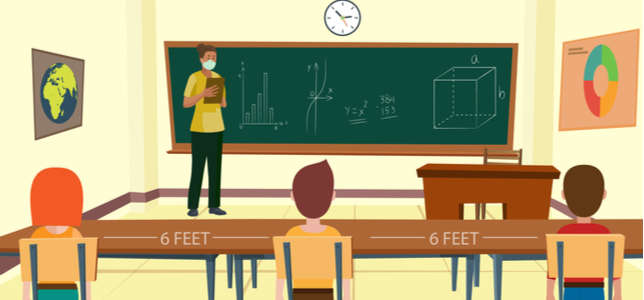7 Steps for Sending Kids Back to School
- By Dian Schaffhauser
- 06/02/20
Give
families and teachers the option of full-time remote learning for
elementary grades in the next school year; shift to an
every-other-day schedule for older elementary kids and let K-3
students attend every weekday; limit classrooms and school buses to
half-capacity; and require masks, lots of hand-washing and strict
stay-at-home guidance for sick students. These are among the ideas
proposed by Michael
Petrilli, president of the Thomas
B. Fordham institute,
in a recent
column
he wrote on how to send "elementary kids back to school and
parents back to work."

Petrilli
prefaced his suggestions with three assumptions:
-
That
the goal of "social distancing" was to reduce the spread
of the virus, "not to reduce to zero the risk of transmission."
That means he explained, that those most at risk can't be put in
harm's way, requiring that teaching and learning from home have to
remain options.
-
That
parents must be able to head back to work, which means the youngest
kids who can't be left on their own at home need to go to school
each day for at least half a day, "though remaining at home
must remain an option."
-
And
that "plans must be affordable," although as Petrilli
pointed out, there's little "political appetite" for
providing additional resources to schools even as schools will need
to practice physical distancing "while also coping with major
budget cuts."
By
providing both remote and in-person instruction, the physical
distancing will be easier for schools to achieve, Petrilli noted. He
envisions schools setting up their own online schools with
"stay-at-home teachers" teaching the "stay-at-home
students" or possibly outsourcing that option to online school
companies.
Petrilli's
thinking about sending the youngest kids into school every day also
includes having the older students (fourth and fifth graders) go in
every other day. "While it’s hardly ideal, fourth and fifth
graders can do some independent work and can be left at home during
the school day," he wrote. Besides, that would also allow for
more physical distancing in classes and on buses.
In
locations where the thought of leaving those grade 4 and 5 students
at home isn't palatable, Petrilli advised, perhaps districts could
use middle schools or high schools to house classrooms for them, and
have middle and high schoolers stay at home more often.
The
article also advised a grouping process, where the same set of 10 to
12 children stay together, aside from on the bus or at recess. These
groupings would be taught by teachers who moved from class to class
(while still keeping their physical distance).
As
a final step, schools need to have "a clear plan ready to go if
an outbreak occurs." While the approach Petrilli offered "should
significantly reduce the risk of a 'super-spreader'" outbreak,
that could still happen, he acknowledged.
The
article provides a prototype weekly schedule for a fictional school,
Lincoln Elementary. The article with full details about the seven
steps is openly available on
the Fordham Institute website.
About the Author
Dian Schaffhauser is a former senior contributing editor for 1105 Media's education publications THE Journal, Campus Technology and Spaces4Learning.